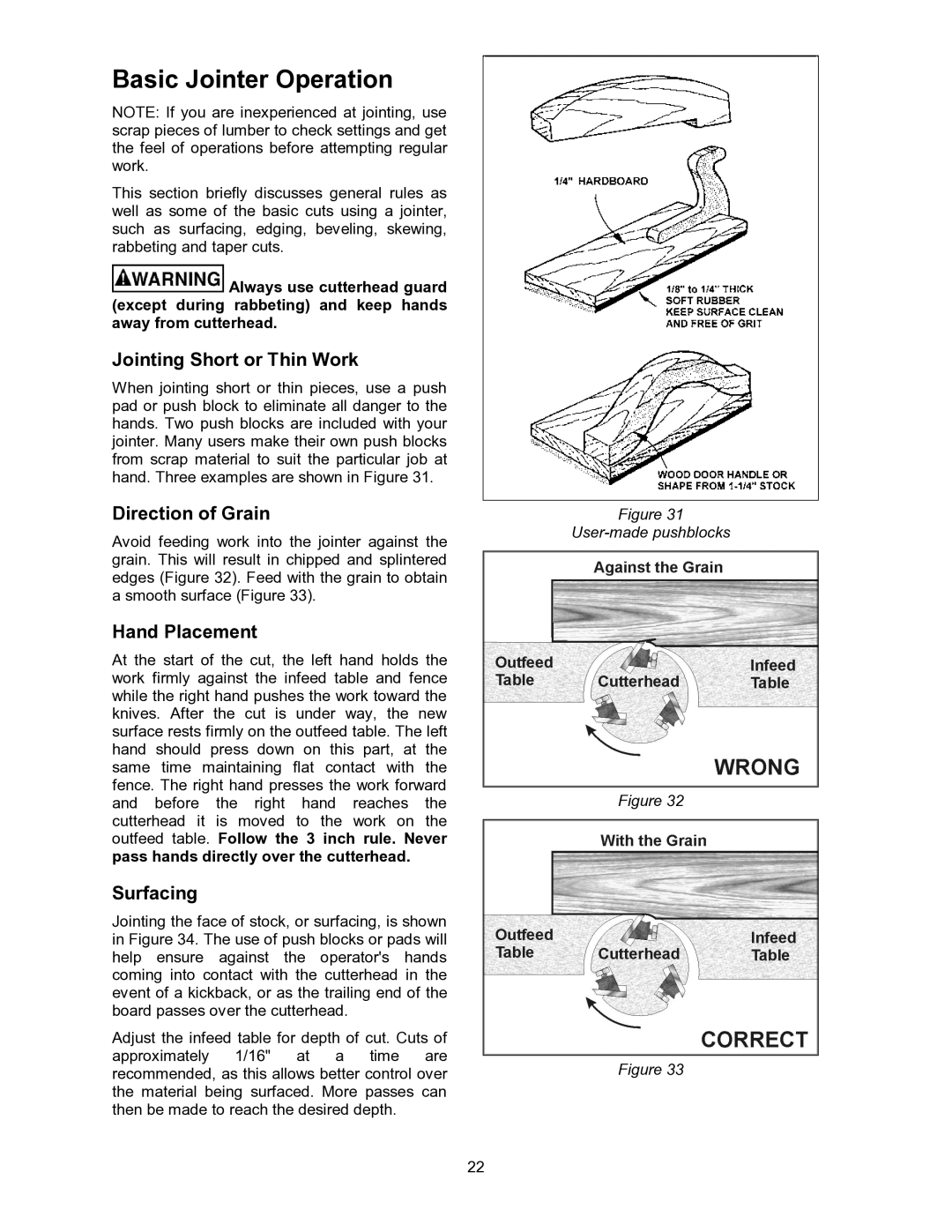60C, 60HH specifications
The Powermatic 60C and 60HH are two exceptional entries in the world of woodworking machinery, specifically designed for woodworkers who demand precision and efficiency in their operations. Both models embody Powermatic's commitment to innovation and performance, catering to the needs of professionals and serious hobbyists alike.One of the standout features of the Powermatic 60C is its advanced digital readout (DRO) system. This technology provides users with accurate measurements and easy adjustments, ensuring that every cut is made with precision. The system helps eliminate guesswork, allowing woodworkers to focus on their craft without worrying about the accuracy of their settings. The 60C also features a powerful 1.75 HP motor, which is capable of handling even the toughest hardwoods with ease.
On the other hand, the Powermatic 60HH boasts the Helical Cutterhead technology, which offers a significant upgrade over traditional straight knives. The helical design consists of multiple cutting edges that provide a smoother cut and reduce tear-out, resulting in a superior finish. This is especially beneficial when working with figured woods or delicate materials. The 60HH also features a 3 HP motor, providing ample power for demanding applications and ensuring consistent performance even under heavy loads.
Both models are equipped with a rigid and robust cast-iron construction, ensuring stability and reducing vibration during operation. This design enhances the durability of the machines and extends their lifespan, making them a worthwhile investment for any serious woodshop.
The jointer beds are precision-ground and provide excellent support for long workpieces, while the fence is easily adjustable and provides accurate guidance for various operations, such as jointing and planing. The intuitive controls make it easy for users to switch between different functions and settings, enhancing workflow efficiency.
In terms of mobility, both the 60C and 60HH come with sturdy, adjustable legs and can be fitted with mobility kits that allow for easy movement around the workshop. This flexibility is a significant advantage for woodworkers who need to optimize their workspace.
In summary, the Powermatic 60C and 60HH represent the pinnacle of jointer and planer technology. With their innovative features, powerful motors, and user-friendly designs, these machines deliver unparalleled performance, making them invaluable assets in any woodworking shop. Whether you prioritize precise adjustments with the 60C or superior cutting capabilities with the 60HH, both models stand ready to elevate your woodworking projects to new heights.

